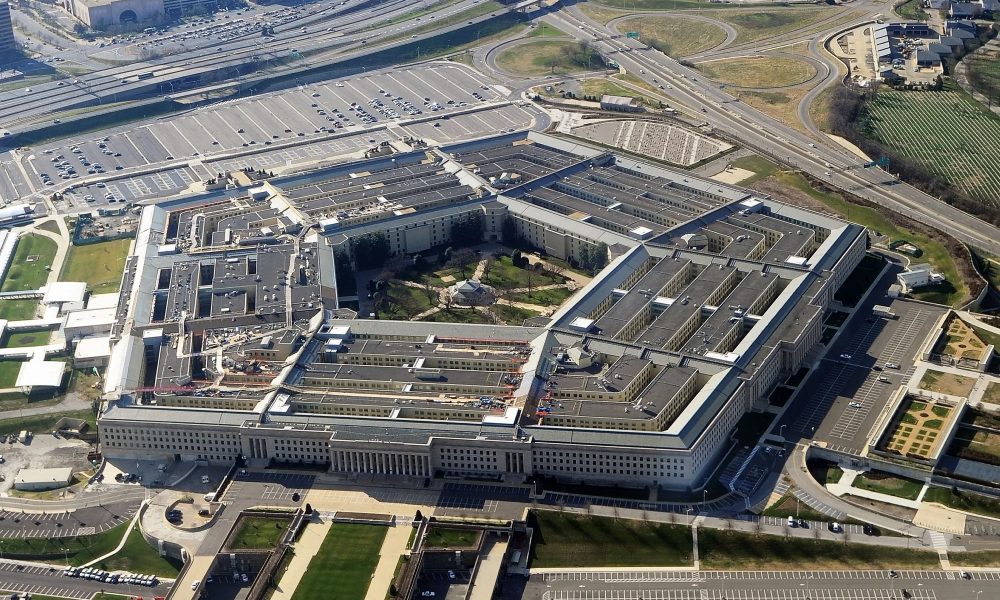Intel has won a federal grant of up to $3.5 billion to produce semiconductors for the Pentagon as part of a classified program called “Secure Enclave.” The agreement, which involves U.S. government officials, is aimed at bolstering the production of chips for military and intelligence purposes, according to sources familiar with the deal.
The program is set to cover multiple U.S. states, including a key manufacturing facility in Arizona, Bloomberg reported. While Intel was seen as the frontrunner for the contract, there has been criticism from other chipmakers and concerns in Washington about relying too heavily on one company. Additionally, disputes over funding have been a point of contention.
Major funding amid national semiconductor push
The grant is expected to be announced as early as next week and is part of the broader $52 billion in incentives allocated under the CHIPS and Science Act, a law enacted by President Joe Biden in 2022 to revitalize the U.S. semiconductor industry and reduce reliance on Asian manufacturers.
This new funding is in addition to the $8.5 billion in grants and $11 billion in loans Intel received earlier this year under the same program. The company is currently in talks to secure further incentives to support its facilities in Arizona, Ohio, New Mexico, and Oregon. However, like other companies benefiting from the CHIPS Act, Intel has yet to receive any of these funds, and the current award is still considered provisional.
Pentagon’s confidence in Intel despite struggles
Despite Intel’s recent financial difficulties, including a disappointing earnings report and lower revenue forecasts that caused its stock to drop, the U.S. government remains confident in the company’s ability to meet its semiconductor needs. Sources say Intel is reassessing its production targets but is more likely to prioritize its U.S. facilities, particularly in Arizona and Ohio, over international projects.
The Pentagon has emphasized the importance of sourcing advanced semiconductors from a U.S. company, and Intel remains the only domestic manufacturer of cutting-edge processors. Rival manufacturers, such as Taiwan’s TSMC and South Korea’s Samsung Electronics, are also building facilities in the U.S. under the CHIPS Act, but their primary operations remain overseas.
Dependency on TSMC and foreign manufacturers
Intel still relies on TSMC for the production of some of its most advanced processors, even as it moves to establish domestic manufacturing capabilities. Discussions in Washington about potentially sourcing chips from foreign manufacturers’ U.S.-based facilities remain ongoing, but these talks are separate from the Secure Enclave program.
It remains unclear which specific chips Intel will produce under the Pentagon contract. While Intel has expressed interest in securing clients like Nvidia and Advanced Micro Devices (AMD), it has struggled to convince them to use its manufacturing services. Commerce Secretary Gina Raimondo has urged companies like Nvidia and Microsoft to consider Intel’s upcoming facility in Ohio, though no large orders have yet materialized.
Funding disputes and delays
The Secure Enclave program was initially set to receive $2.5 billion in funding from the Pentagon, but that commitment was withdrawn in February. The Department of Commerce, already overseeing $1 billion in funding, was left to shoulder the full cost. At one point, officials considered integrating Secure Enclave with other commercial production incentives for Intel, but ultimately decided to treat it as a separate initiative.
The delay in funding has not only affected Intel but also other U.S. companies. A planned commercial R&D program was scrapped, forcing the Commerce Department to reject a $4 billion funding request from Applied Materials for a project in Silicon Valley. Efforts to add $3 billion to the CHIPS Act to address these gaps have stalled in Congress.
Intel faces growing pressure
Intel’s struggles raise questions about the U.S. government’s ability to meet its semiconductor goals, including securing a reliable supply of advanced chips for the Pentagon and producing 20% of the world’s cutting-edge processors by 2030. The company has faced declining sales, financial strain, and a loss of market value, prompting its board to consider drastic measures such as splitting its manufacturing division or scaling back global operations.
The delays in government funding have further frustrated Intel, which has resisted providing some of the information requested by U.S. officials seeking to assess the viability of its manufacturing roadmap. The company’s stock hit a historic low in August after a surprise quarterly loss, leading to a credit rating downgrade and the announcement of up to 15,000 job cuts. These developments have sparked concern in Congress, as Intel was seen as a key player in rebuilding the U.S. semiconductor workforce.
Lagging behind in AI market
Despite efforts to catch up, Intel continues to trail rivals Nvidia and AMD in the rapidly growing AI chip market. CEO Pat Gelsinger has established an AI Acceleration Office to coordinate efforts across Intel’s various business units, but the company’s AI sales still lag far behind competitors. Intel expects to generate $500 million in sales from its latest AI chips this year, compared to Nvidia’s tens of billions in revenue from GPUs.
Intel’s challenges have been compounded by significant executive departures, widespread layoffs, and plummeting market capitalization. In stark contrast to Nvidia, which added $1.4 trillion to its market cap in 2023, Intel’s valuation has fallen to $83 billion, down $70 billion over the past year.

